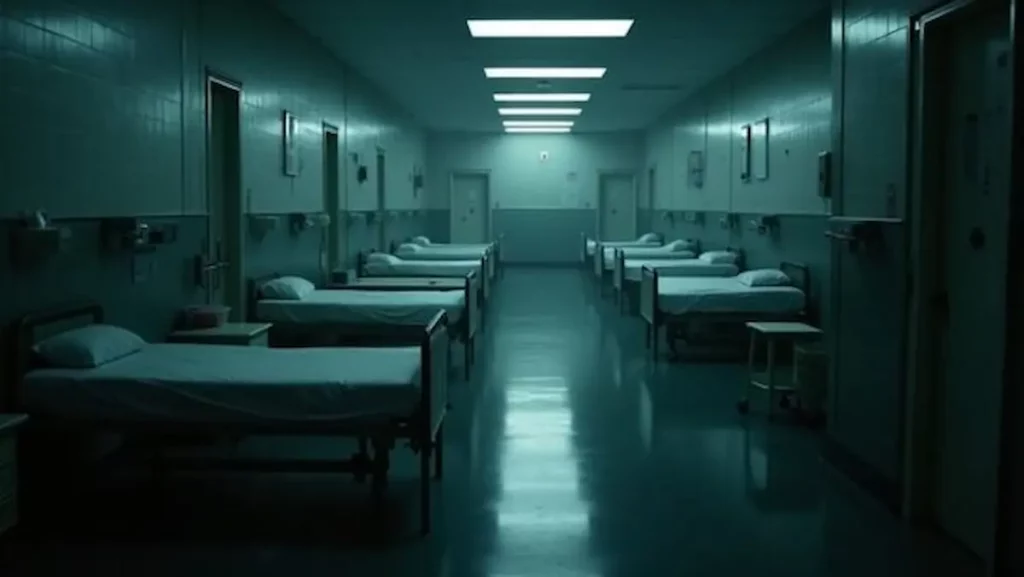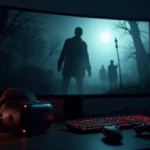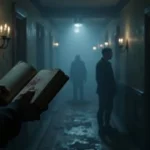
How to complete teach the police trial in Outlast Trials
Discover deadly strategies to outsmart your foes and complete the Teach the Police Trial in Outlast Trials—mastery demands more than just skill.


Unlike the chaotic male ward, this section of Mount Massive Asylum is eerily silent, raising questions about the asylum’s secrets. Is it simply abandoned, or does it hide darker truths about missing patients and the experiments conducted behind closed doors?

The emptiness hints at something deeper, something players must piece together themselves. Exploring why the female ward is empty in Outlast may reveal more than the game explicitly shows… if you dare to look.
Mount Massive Asylum is the eerie and isolated setting of Outlast, with long hallways, empty rooms, and broken equipment that tell a story of neglect and cruel experiments.
Inspired by early 20th-century design, the architecture of Mount Massive Asylum focuses on control and containment, which adds to the feeling of being trapped.
When you look at the history behind Mount Massive Asylum, it’s easy to see how its structure supports Outlast’s themes of psychological horror and institutional collapse, making the game’s setting unforgettable.
The design choices behind the female ward in Outlast play a key role in building tension and fear. In the female ward, sparse character presence creates a sense of isolation, while dim lighting and stark visuals dial up the unease.
These unsettling design elements in the female ward reinforce themes of abandonment and dread without heavy exposition, using environmental storytelling to immerse horror game fans and enhance the overall gameplay experience.
Although the female ward in Outlast remains largely unoccupied, its emptiness carries significant narrative weight. This absence creates a stark contrast with the male ward’s chaos, highlighting unsettling gender dynamics within the asylum.
In Outlast, the void suggests themes of isolation and neglect, shaping the player’s experience through atmosphere rather than direct exposition. This subtle design choice in Outlast helps build tension, deepen world building, and keep players engaged with the game’s disturbing story.
Patient distribution in Outlast plays a key role in shaping both gameplay and narrative.
The way patients are placed, like the empty female ward, reflects specific demographics and guides how players move through each area. This selective patient distribution influences encounters, directs attention to key characters, and reduces distractions, leading to tighter pacing and tension.
How does the emptiness of the female ward affect the player’s sense of unease and immersion? In horror games, the emptiness of the female ward heightens player immersion by building a tense, unsettling atmosphere that makes every footstep feel significant.
This design choice amplifies feelings of isolation and uncertainty, encouraging players to imagine unseen dangers and anticipate sudden scares. By using the emptiness of the female ward as a narrative tool, the game deepens emotional engagement, boosts replay value, and enhances the overall horror experience for players who crave immersive, atmospheric gameplay.
Why does the female ward remain empty throughout Outlast? Fans keep asking this haunting question about the female ward, and community theories offer several compelling answers.
Some argue the female ward symbolizes neglect or erasure within the game’s world, while others believe its emptiness is a deliberate design choice to intensify isolation and fear.
Either way, the female ward becomes a powerful storytelling tool, pushing players to look beyond surface-level horror and explore deeper themes in Outlast’s lore.
The female ward may be physically empty, but in Outlast it still holds powerful meaning. This space symbolizes absence and erasure, connecting to feminine horror and the way women’s stories are often sidelined in games.
In Outlast, the empty ward invites players to think about societal fears and the marginalization of women’s experiences, adding depth to the game’s world. By exploring how Outlast uses silence and empty spaces, we see how the game comments on overlooked gender representation.
Outlast uses the female ward not just as a setting, but as a statement that amplifies the game’s themes and challenges players to question what is missing and why.
In the game’s asylum, the female ward stands out for its unsettling emptiness compared to the busier, chaotic male wards. This contrast isn’t accidental, it suggests a deliberate design choice that reduces female representation and shapes how players read the space.
By highlighting this imbalance, the game uses the female ward to amplify tension and narrative focus, making players question who is present, who is missing, and why.
For fans of horror games and level design analysis, the female ward becomes a powerful showcase of environmental storytelling and how games guide player perception through space and silence.
The emptiness of the female ward opens strong opportunities for game narrative expansion. In many games, the absence of female patients creates narrative gaps that can be explored to deepen the asylum’s backstory, enrich world building, and boost immersion.
By introducing new characters, the game can uncover overlooked plot elements, add emotional depth, and deliver diverse perspectives that elevate the overall experience.
These story developments related to the ward can also increase player engagement by addressing the unexplained vacancy and connecting it to broader game lore.
For developers focused on long-term player retention, expanding the female ward with meaningful content can become a compelling hook that strengthens the game’s narrative core.
The emptiness of the female ward in Outlast is a deliberate design choice that heightens the game’s tension and horror. By leaving the area abandoned, the developers create a stark contrast with the chaotic male ward, making players feel unsettled and curious about what happened. This choice supports themes of isolation, neglect, and erasure within Mount Massive Asylum, making the story feel darker and more mysterious. For fans who wonder why the female ward is empty in Outlast, the silence becomes part of the narrative itself, encouraging exploration and speculation. Ultimately, the empty spaces intensify the atmosphere, deepen the lore, and make Outlast’s scares more psychological. If you’re analyzing level design or asking why the female ward is empty in Outlast, this eerie absence is key to understanding how the game builds dread and keeps players on edge.

Discover deadly strategies to outsmart your foes and complete the Teach the Police Trial in Outlast Trials—mastery demands more than just skill.

Keen fans of fear will find 2025’s best horror games redefine terror, but which titles deliver the ultimate nightmare experience? Discover the chilling answers here.

What makes the best Resident Evil game truly unforgettable? Discover the thrilling factors that set these iconic titles apart and decide for yourself.

Hidden behind her haunting resemblance to Mary, Maria in Silent Hill 2 challenges reality and reveals unsettling truths about guilt and desire.

Only glimpses of Resident Evil 9’s story and gameplay have emerged, teasing new horrors and characters that fans won’t want to miss.

Known for her mysterious presence, Laura in Silent Hill 2 challenges perceptions and uncovers hidden truths that will change everything you thought you knew.